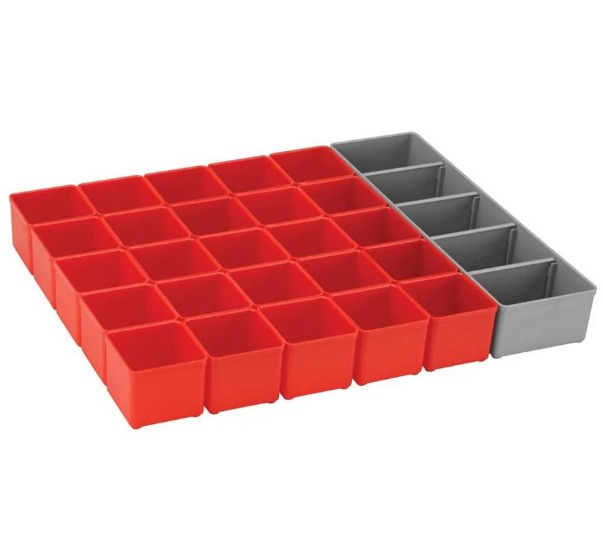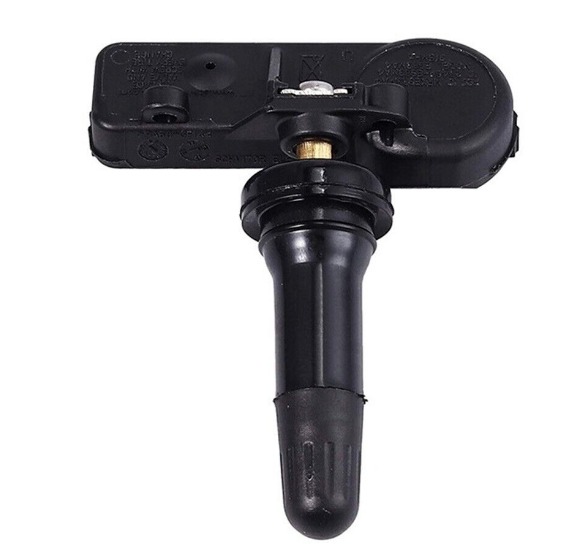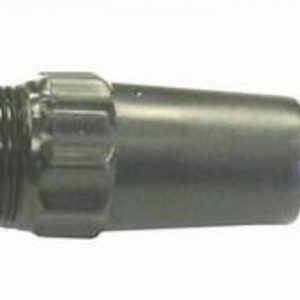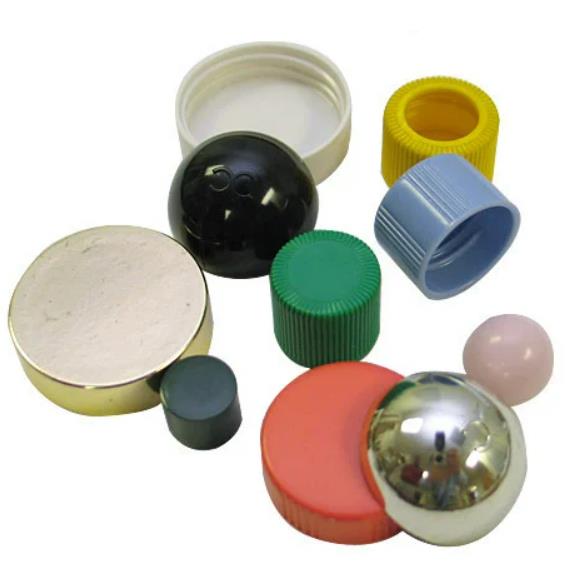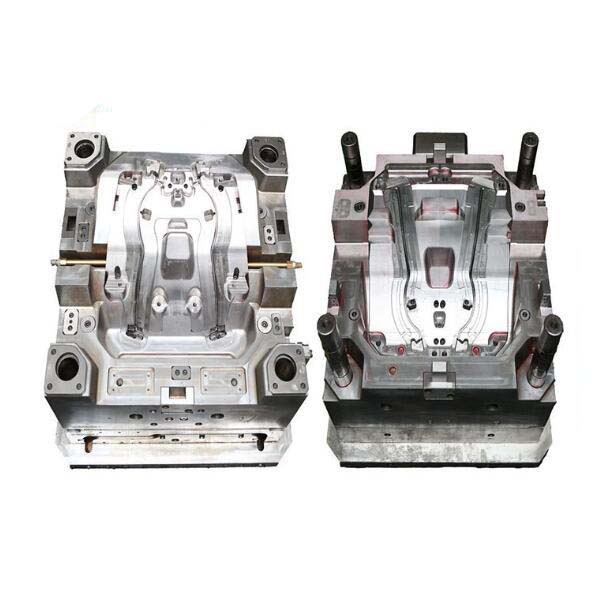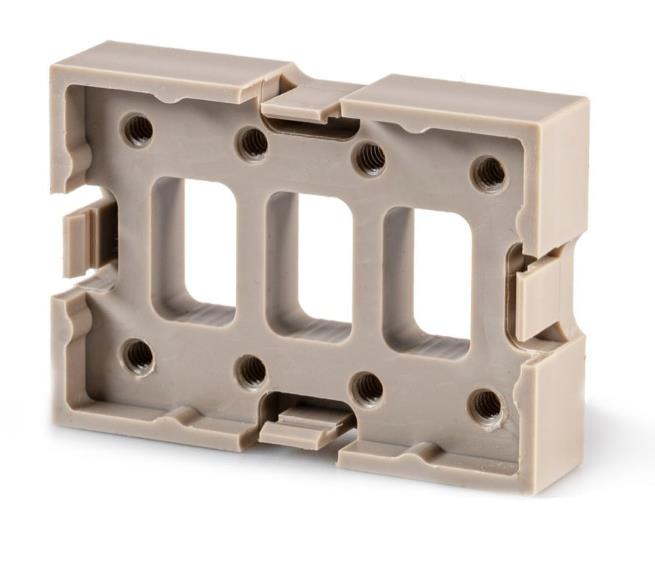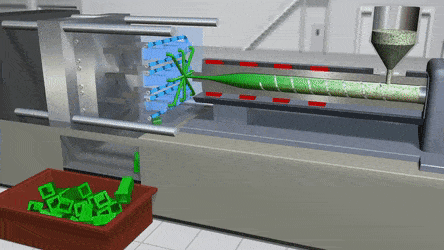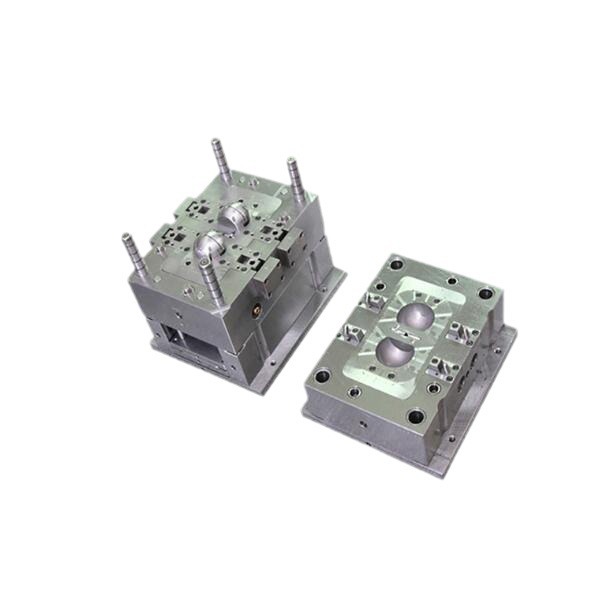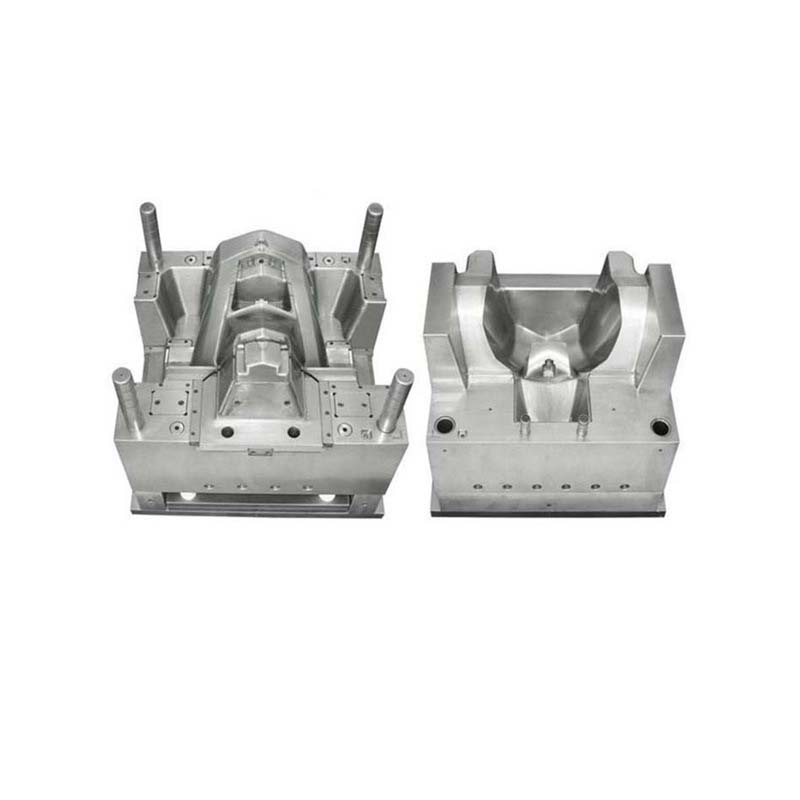What is China Rapid Injection Molding
Rapid injection molding is a manufacturing process that involves quickly injecting molten plastic material into a mold cavity to create a wide variety of plastic parts. This method is highly efficient and suitable for producing parts with complex shapes and high precision requirements. The process typically includes several key steps: plastic material is first loaded into the injection molding machine, where it is heated and melted. Then, the molten plastic is injected into a cooled mold under high pressure. Once the plastic has cooled and solidified within the mold, the mold is opened, and the finished part is ejected.
China has emerged as a global powerhouse in rapid injection molding. The country's manufacturing industry has experienced remarkable growth over the past few decades, and rapid injection molding is no exception. With a large pool of skilled labor, advanced manufacturing technologies, and a well - developed industrial infrastructure, China can offer high - quality rapid injection molding services at competitive prices.
Technical Maturity
Chinese manufacturers have mastered a wide range of injection molding techniques, from traditional injection molding to more advanced processes such as multi - material injection molding and micro - injection molding. For example, in the production of small, high - precision components for the electronics industry, Chinese companies can achieve extremely tight tolerances, often within ±0.01mm. This high level of technical proficiency allows them to meet the strict requirements of international clients across various industries, including automotive, consumer electronics, medical, and aerospace.
Cost - effectiveness
One of the significant advantages of China's rapid injection molding is its cost - effectiveness. Lower labor costs compared to many Western countries, combined with the large - scale production capabilities, enable Chinese manufacturers to offer competitive pricing. For instance, when producing a large batch of plastic components, the cost per unit in China can be 30 - 50% lower than in some European or North American countries. This cost advantage is further enhanced by the country's efficient supply chain, which reduces the cost of raw materials and transportation.
Complete Industrial Clusters
China has established several well - known industrial clusters dedicated to injection molding and related industries. Areas like the Yangtze River Delta, Pearl River Delta, and Bohai Rim region are home to thousands of injection molding enterprises, along with a vast number of suppliers of raw materials, molds, and equipment. In the Pearl River Delta region, for example, there are over 10,000 injection molding - related companies. These industrial clusters create a highly collaborative environment, where companies can easily access resources, share knowledge, and reduce lead times. They also foster innovation, as companies in close proximity can learn from each other and develop new technologies and products more quickly.
The Process Demystified
Now that we have a basic understanding of what China rapid injection molding is, let's take a closer look at the injection molding process itself. This process is a well - orchestrated sequence of steps that transform raw plastic materials into high - quality finished products.
1. Raw Material Preparation
The first step in the injection molding process is raw material preparation. Plastic materials are typically supplied in the form of pellets or powder. The choice of material is crucial, as different plastics have unique properties. For example, Polypropylene (PP) is known for its good chemical resistance, high melting point, and relatively low cost, making it suitable for a wide range of applications such as automotive parts, household appliances, and packaging. On the other hand, Acrylonitrile Butadiene Styrene (ABS) is prized for its excellent impact resistance, surface finish, and ease of processing, and is often used in consumer electronics, toys, and automotive interiors.
Material properties like fluidity and shrinkage rate play a significant role in the molding process. High - fluidity plastics can be easily injected into complex - shaped molds, while low - fluidity plastics may require higher injection pressures. The shrinkage rate determines how much the plastic will contract as it cools and solidifies. Precise knowledge of these properties is essential for ensuring the final dimensions and quality of the molded part. For instance, if the shrinkage rate is not accounted for correctly, the finished product may be too small or may have internal stresses that can lead to cracking or warping over time.
2. Heating and Melting
Once the raw material is selected, it is fed into the injection molding machine's hopper and then enters the heating barrel. Inside the barrel, the plastic is heated by electric heaters or other heating elements. The heating process gradually raises the temperature of the plastic until it reaches its melting point and transforms from a solid to a molten state.
Temperature control is of utmost importance during this stage. Different plastics have different melting points. For example, the melting point of Polyethylene (PE) ranges from approximately 110 - 130°C for low - density polyethylene (LDPE) to 130 - 170°C for high - density polyethylene (HDPE). If the temperature is too low, the plastic may not melt completely, resulting in inconsistent flow during injection and defects in the final product such as short shots (where the mold is not fully filled). Conversely, if the temperature is too high, the plastic may degrade, losing its mechanical properties and potentially causing discoloration or the formation of charred particles. Advanced injection molding machines are equipped with sophisticated temperature control systems that can maintain the temperature within a very narrow tolerance, typically ±1 - 2°C, to ensure optimal material performance.
3. Injection
With the plastic in a molten state, the next step is injection. A high - pressure screw or piston forces the molten plastic through a nozzle and into the mold cavity. The injection pressure and speed are critical parameters that can significantly impact the quality of the molded part.
High injection pressures are required to fill complex molds with long flow paths or thin - walled sections. However, if the pressure is too high, it can cause the plastic to flow too quickly, leading to issues such as air entrapment, which can result in voids or bubbles in the final product. Additionally, excessive pressure can cause the mold to deform or even damage the mold components. On the other hand, low injection pressures may result in incomplete filling of the mold cavity.
The injection speed also affects the quality of the part. A fast injection speed can help to quickly fill the mold and reduce the risk of premature solidification of the plastic. But it can also lead to turbulence in the molten plastic flow, which may cause weld lines (where two streams of molten plastic meet and fuse) and flow marks on the surface of the part. A slow injection speed, while reducing the risk of turbulence, may increase the cycle time and may not be suitable for parts with complex geometries. For example, when molding a small, intricate electronic component, a relatively high injection speed might be used to ensure quick filling of the mold, while for a large, thick - walled automotive bumper, a slower injection speed might be more appropriate to prevent defects.
4. Cooling and Solidification
After the mold is filled with molten plastic, the cooling and solidification stage begins. This is a crucial step as it determines the final shape, dimensions, and mechanical properties of the product. The mold is typically cooled by circulating water or other cooling media through channels within the mold.
The cooling time is a significant factor in the overall cycle time of the injection molding process. It depends on various factors such as the thickness of the part, the type of plastic used, and the cooling efficiency of the mold. As a general rule, thicker parts require longer cooling times. For example, a plastic part with a thickness of 3 - 5 mm may take 10 - 20 seconds to cool and solidify, while a part with a thickness of 10 - 15 mm may require 30 - 60 seconds or more. If the cooling time is too short, the plastic may not have fully solidified, and the part may deform when ejected from the mold. On the other hand, if the cooling time is too long, it will increase the production cycle time and reduce productivity.
The cooling method also affects the quality of the part. Uniform cooling is essential to prevent warping and internal stresses. Uneven cooling can cause different parts of the plastic to contract at different rates, leading to warping and dimensional inaccuracies. Advanced mold designs often incorporate optimized cooling channels to ensure uniform heat dissipation.
5. Mold Opening and Part Ejection
Once the plastic has cooled and solidified sufficiently, the mold is opened. The two halves of the mold (the stationary and the moving half) are separated, exposing the molded part. To facilitate the removal of the part from the mold, a release agent or mold release agent may be used. This agent is applied to the mold surface before each cycle to reduce the friction between the plastic and the mold, making it easier to eject the part.
The part is then ejected from the mold using ejector pins or other ejection mechanisms. The ejection force needs to be carefully controlled. If the ejection force is too high, it can damage the part, causing cracks, tears, or deformation. If the force is too low, the part may not be fully ejected from the mold, and manual intervention may be required, which can disrupt the production process. Modern injection molding machines are equipped with sensors and control systems that can precisely control the ejection force based on the characteristics of the part and the mold.
6. Post - processing
After the part is ejected from the mold, it may undergo post - processing steps to enhance its appearance, functionality, or performance. One common post - processing step is deburring or removing any excess plastic (known as flash) that may have formed during the injection process. Flash can occur at the edges of the mold where the two halves meet or in areas with small gaps. Removing flash is important for ensuring a clean and professional appearance of the product.
Trimming may also be necessary to remove any excess material or to cut the part to its final size and shape. This is often the case for parts with complex geometries or for parts that require specific cutouts or holes.
Painting or coating can be applied to improve the aesthetics of the part, provide protection against corrosion or wear, or enhance its surface properties. For example, in the automotive industry, plastic parts are often painted to match the color of the vehicle body, and in the electronics industry, parts may be coated with a protective layer to prevent electrostatic discharge or to improve their resistance to environmental factors.
Other post - processing steps may include assembly with other components, surface texturing to add a specific texture or pattern to the surface, or heat treatment to improve the mechanical properties of the plastic. These post - processing steps can significantly enhance the value and functionality of the final product.
Yigu Technology's View
As a non - standard plastic metal products custom Supplier, Yigu Technology highly values China's rapid injection molding industry. Quality control is at the core of our operations. We implement strict inspection at every stage of the injection molding process, from raw material inspection to the final product testing. For example, we use advanced testing equipment to check the mechanical properties and dimensional accuracy of parts, ensuring they meet or exceed international standards.
Innovation in technology is also crucial. We invest in research and development to explore new materials and molding techniques. This allows us to offer more customized solutions to our clients, whether it's creating parts with unique geometries or developing products with special performance requirements. By constantly improving our processes, we aim to stay at the forefront of the industry and provide high - quality, cost - effective products for various applications.
FAQ
1. What are the key factors affecting the quality of rapid injection molding?
Several factors play a crucial role. Temperature is vital, including the melt temperature and mold temperature. Incorrect melt temperature can lead to issues like incomplete melting or material degradation, while improper mold temperature may cause warping or uneven cooling. Pressure, such as injection pressure and 保压压力,affects the filling of the mold cavity. High injection pressure might cause flash or mold damage, while low pressure can result in short shots. The material itself matters; different plastics have unique properties, and using the wrong material can lead to problems like low strength or poor dimensional stability. Additionally, the mold quality is significant. A poorly designed or worn - out mold can cause defects like inconsistent wall thickness, flow marks, or poor surface finish.
2. How to choose the right plastic material for injection molding?
Firstly, consider the product requirements. For example, if the product needs to withstand high temperatures, materials like Polyetheretherketone (PEEK) or Polyamide (PA) could be suitable. If it requires high impact resistance, Acrylonitrile Butadiene Styrene (ABS) might be a good choice. Secondly, evaluate the material properties, such as strength, flexibility, chemical resistance, and electrical properties. Thirdly, take the cost into account. Commodity plastics like Polypropylene (PP) and Polyethylene (PE) are generally more cost - effective, while engineering plastics are often more expensive but offer superior performance. Also, consider factors like the material's availability and ease of processing.
3. What are the differences between rapid injection molding and traditional injection molding?
In terms of production cycle, rapid injection molding is much faster. It can produce parts in a shorter time, sometimes reducing the cycle time by 30 - 50% compared to traditional injection molding, which is beneficial for quick prototyping and small - batch production. Regarding cost, rapid injection molding may have lower upfront costs as it often uses less complex molds and can start production more quickly. However, for large - scale production, traditional injection molding may become more cost - effective due to economies of scale. In terms of precision, both can achieve high precision, but rapid injection molding may be more suitable for parts with less strict dimensional tolerances in some cases. Traditional injection molding, with more refined processes and high - quality molds, can achieve extremely tight tolerances, often within ±0.01mm for high - end products.
